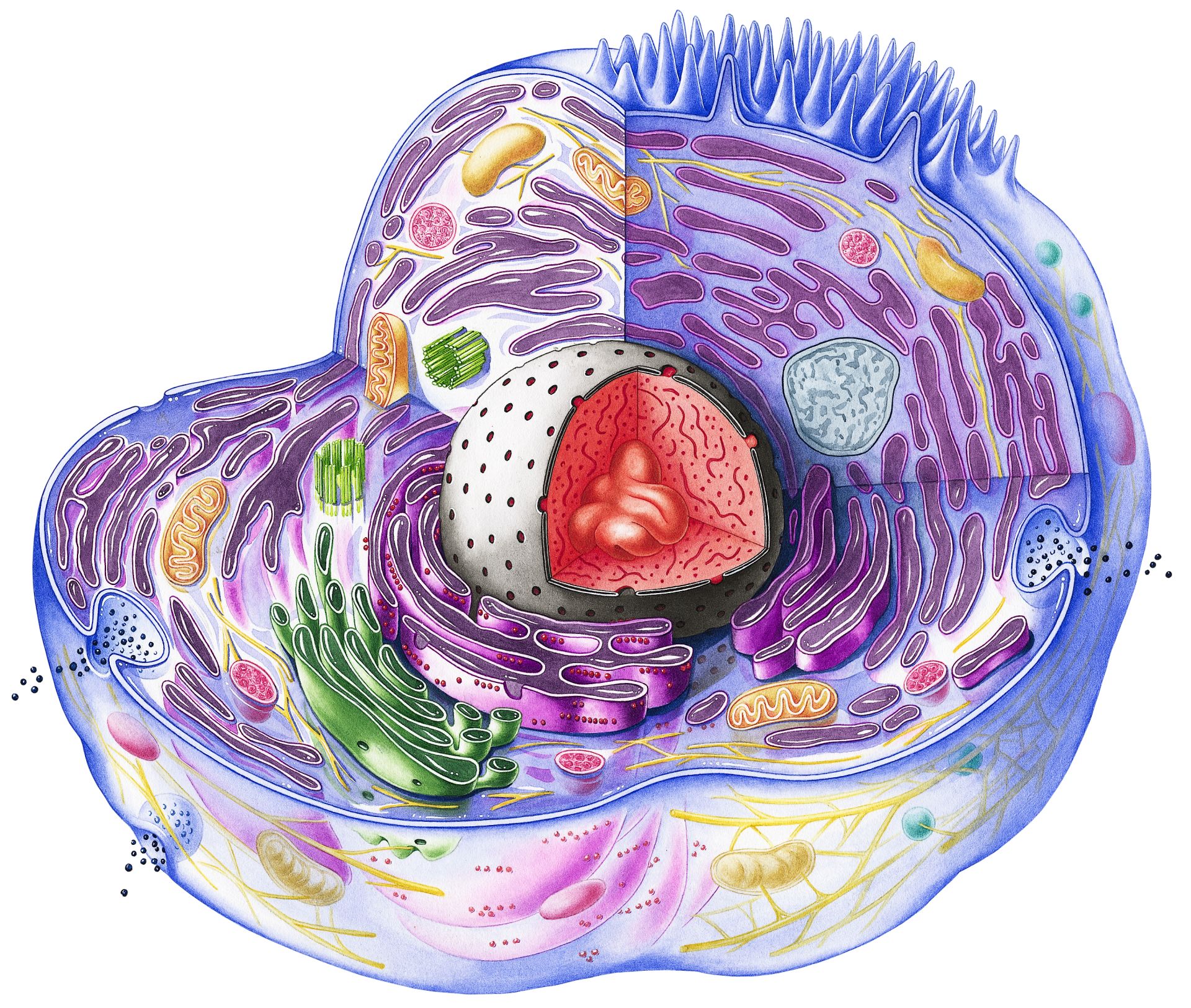What are Cells?
By: Chloe





By: Chloe
What are cells?
The smallest structural and functional unit of an organism, typically microscopic and consisting of cytoplasm and a nucleus enclosed in a membrane. Microscopic organisms typically consist of a single cell, which is either eukaryotic or prokaryotic.The human body is composed of trillions of cells. They provide structure for the body, take in nutrients from food, convert those nutrients into energy, and carry out specialized functions. Cells also contain the body’s hereditary material and can make copies of themselves.
Cells have many parts, each with a different function. Some of these parts, called organelles, are specialized structures that perform certain tasks within the cell.
Cells have many parts, each with a different function. Some of these parts, called organelles, are specialized structures that perform certain tasks within the cell.

What are the different functions of cells?
Cells provide six main functions. They provide structure and support by having cells generally provide the structural basis of all organisms. Cells also facilitate growth through mitosis. Through the process of mitosis in which the parent cell breaks down to form two daughter cells identical to it. Furthermore, cells allow passive and active transport. Cells allow active transportation and the process of simple diffusion. Cells produce energy due to the process of photosynthesis. Moreover, cells also have metabolic reactions also known as metabolism which includes all the chemical reactions that take place inside an organism to keep it alive. Lastly, cells help in reproduction through the processes of Mitosis, asexual reproduction, and Meiosis.

What are the two basic types of cells?
The two basic types of cell are Eukaryotes and Prokayotes. Eukaryotes are a cell or cells in which the genetic material is DNA in the form of chromosomes contained within a distinct nucleus. Eukaryotes include all living organisms other than the eubacteria and archaebacteria. According to http://www.softschools.com, it states that "Animals such as cats and dogs have eukaryotic cells. Plants such as apple trees have eukaryotic cells. Fungi such as mushrooms have eukaryotic cells. Protists such as amoeba and paramecium have eukaryotic cells. Insects have eukaryotic cells. Humans are composed entirely of eukaryotic cells." In comparison, prokaryotes are a microscopic single-celled organism that has neither a distinct nucleus with a membrane nor other specialized organelles. Prokaryotes include the bacteria and cyanobacteria. According to https://www.cliffsnotes.com "Examples of prokaryotes are bacteria and archaea."

What does a cell consist of?
A cell consists of three parts: the cell membrane, the nucleus, and, between the two, the cytoplasm. According to https://training.seer.cancer.gov "Within the cytoplasm lie intricate arrangements of fine fibers and hundreds or even thousands of miniscule but distinct structures called organelles." A cell membrane is the semipermeable membrane surrounding the cytoplasm of a cell. A nucleus is a dense organelle present in most eukaryotic cells, typically a single rounded structure bounded by a double membrane, containing the genetic material. Lastly, a cytoplasm is the material or protoplasm within a living cell, excluding the nucleus.

Comments
Post a Comment